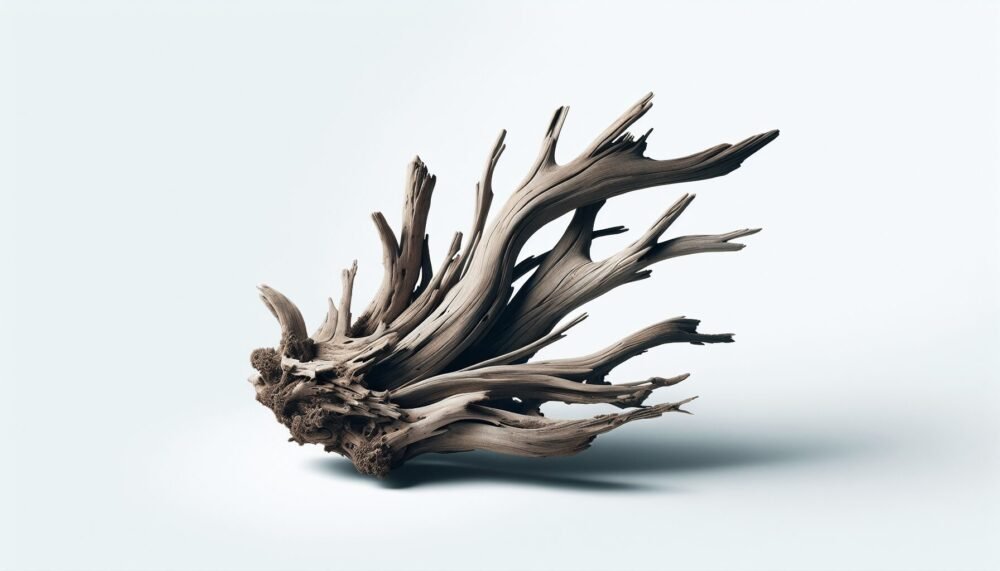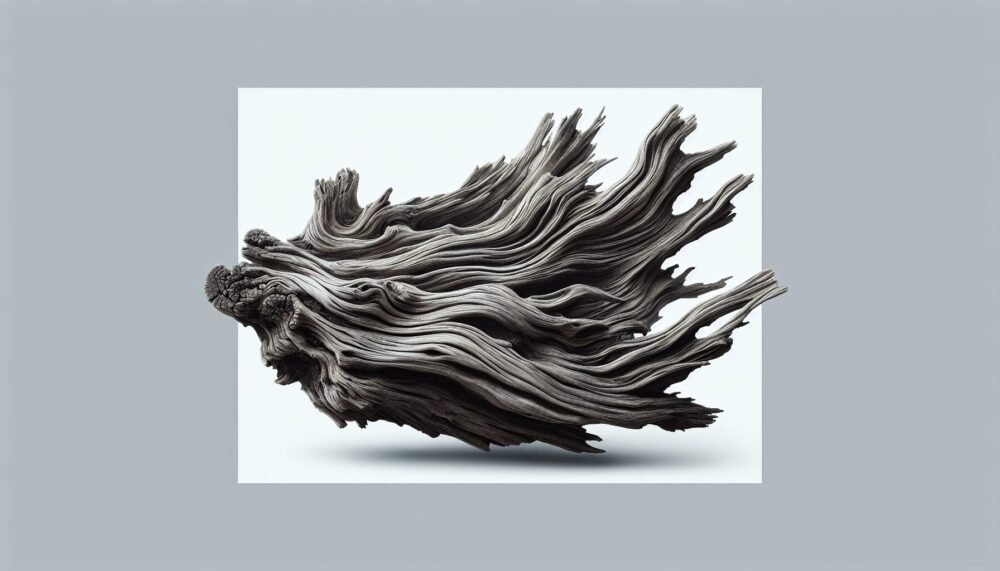Welcome to the world of gardening with a twist—using driftwood for plants! In this article, you will discover how incorporating pieces of driftwood can transform your garden or indoor plant space into a natural masterpiece. You’ll learn the best types of driftwood to use, creative ways to showcase your greenery, and tips for maintaining this unique décor. Whether you’re a seasoned gardener or a newbie with a green thumb, driftwood offers a charming, organic way to elevate your plant presentation. Get ready to be inspired and take your plant styling to the next level with these earthy and enchanting ideas! Have you ever wondered how you can elevate your indoor or outdoor gardening game using natural elements? Driftwood for plants is a charming and eco-friendly way to blend nature’s beauty with your green thumb. Utilizing driftwood in your gardening isn’t just about aesthetics; it offers numerous benefits for both your plants and your home’s décor.

What is Driftwood?
Driftwood refers to pieces of wood that have been washed ashore by oceans, rivers, or lakes. These pieces are naturally sculpted by water and sand over time, creating uniquely textured and shaped wooden fragments.
Natural Beauty
Driftwood boasts a rustic charm and natural beauty that can complement any plant setup. Because it has been naturally treated by elements, each piece is unique and adds character to your garden or home décor.
Sustainability
Using driftwood is an eco-friendly choice. It’s a natural material that doesn’t require further processing, reducing your carbon footprint. By incorporating driftwood into your gardening, you’re recycling nature’s own art.
Benefits of Using Driftwood for Plants
So why should you consider using driftwood in your plant setup? The benefits are quite extensive and can enhance both the health of your plants and the aesthetics of your space.
Aeration
When integrated into soil or used as a platform for epiphytic plants, driftwood helps improve aeration. The porous nature of aged wood promotes better air circulation around the plant’s roots, which is essential for healthy plant growth.
Moisture Retention
Driftwood naturally absorbs and retains moisture. This characteristic is particularly beneficial in maintaining humidity for plants that require high moisture levels.
Support Structure
Some plants, especially epiphytes like orchids and air plants, thrive when anchored to a stable support structure. Driftwood provides a sturdy yet naturally occurring perch for these plants to latch onto.
Aesthetic Appeal
Driftwood adds an earthy, rustic element to any planting arrangement. Whether you’re creating a succulent garden, terrarium, or simply looking for an interesting plant stand, driftwood can be the perfect accent piece.
Types of Driftwood and Their Uses
Different types of driftwood offer various benefits and uses. Here’s a list showcasing popular types of driftwood and their best applications:
| Driftwood Type | Characteristics | Best Uses |
|---|---|---|
| Manzanita Driftwood | Hard and dense, smooth bark | Aquascaping, mounting air plants |
| Cholla Driftwood | Cylindrical, porous, lightweight | Terrariums, desert-themed gardens |
| Spider Wood | Twisted, branch-like, root structure | Large aquariums, artistic plant setups |
| Malaysian Driftwood | Dark, heavy, and durable | Fish tanks, large foliage plants |
| Mangrove Driftwood | Dense, twisted roots | Brackish aquariums, reptile habitats |
How to Choose the Right Driftwood
Selecting the right type of driftwood for your plants primarily depends on the plant species and the aesthetic you aim to achieve. Ensure the driftwood is free from pests and hasn’t been treated with chemicals that could harm your plants.
Preparation and Treatment of Driftwood
Before incorporating driftwood into your gardening setup, it’s essential to properly prepare and treat the wood to ensure it doesn’t harm your plants or introduce pests.
Cleaning the Driftwood
The first step is to clean the driftwood. Here’s a simple guide to doing it effectively:
- Scrub: Use a stiff brush to scrub off any dirt, debris, or algae.
- Soak: Soak the driftwood in fresh water for several days to remove any salt or contaminants. Change the water daily.
- Boil: For smaller pieces, consider boiling the driftwood for an hour to ensure all bacteria and pests are killed.
Curing Process
Curing is crucial, particularly if you plan to use the driftwood in an environment with sensitive plants or in aquariums. Here’s how you can do it:
- Soak the Driftwood: Soak it in water for several weeks, changing the water regularly until the wood becomes waterlogged.
- Drying: Let the driftwood dry thoroughly under the sun. This helps to solidify its structure and minimize any residual contaminants.

DIY Driftwood Plant Projects
There are countless ways you can use driftwood to make your plant setups more captivating. Here are some delightful DIY projects to spark your creativity:
Driftwood Planter
A driftwood planter can be a striking focal point in any garden or indoor space.
Materials:
- Large piece of driftwood
- Drill
- Screws
- Planting container (e.g., pot or small tray)
- Soil mix suitable for your plant
Steps:
- Select Driftwood: Choose a piece of driftwood large enough to house your planting container.
- Attach Container: Secure the container to the driftwood using screws.
- Fill with Soil: Add a soil mix suitable for your chosen plant.
- Plant: Place your plant in the soil and water it well.
Driftwood Air Plant Holder
Air plants (Tillandsia) are ideal for driftwood as they don’t require soil.
Materials:
- Driftwood pieces
- Fishing line or wire
- Air plants
- Glue (optional)
Steps:
- Arrange Driftwood: Identify spots on the driftwood to position your air plants.
- Secure Plants: Use fishing line or wire to attach the plants securely to the driftwood.
- Optional Glue: For added stability, you can use a tiny dot of non-toxic glue to hold the plants in place.
Driftwood Terrarium
Terrariums with driftwood create a miniature, self-contained ecosystem that’s visually stunning.
Materials:
- Glass container or aquarium
- Driftwood pieces
- Gravel or small stones
- Activated charcoal
- Potting soil
- Suitable plants (e.g., mosses, ferns, small succulents)
Steps:
- Base Layer: Add a base layer of gravel for drainage.
- Charcoal Layer: Add a thin layer of activated charcoal to keep the terrarium fresh.
- Soil Layer: Add a suitable soil mix.
- Arrange Driftwood: Place the driftwood inside the terrarium, creating a naturalistic landscape.
- Plant: Add plants around the driftwood, ensuring they have enough space to grow.
Best Plants for Driftwood Integration
Certain plants pair exceptionally well with driftwood, enhancing both the plant’s health and visual appeal.
Orchids
Orchids often grow epiphytically in their natural habitat, making driftwood an ideal anchor.
Tillandsia (Air Plants)
These plants thrive without soil and only need occasional misting, making driftwood a perfect match.
Bromeliads
Similar to orchids, many Bromeliads are also epiphytic, growing well when mounted on driftwood.
Mosses
Mosses can be tucked into crevices on the driftwood, creating a lush, green landscape.
Succulents
Many succulents prefer sandy, well-draining soil, and driftwood can offer both structure and function in a succulent garden.
Maintenance of Driftwood in Plant Setups
Maintaining driftwood in your plant setup is relatively easy, but it does require some attention to ensure longevity and plant health.
Regular Cleaning
Dust and dirt can accumulate on both the driftwood and the plants. Regularly clean your driftwood setup with a soft brush or a damp cloth.
Monitoring Plant Health
Keep an eye on your plants for any signs of distress, such as yellowing leaves or stunted growth, and adjust watering and light conditions as necessary.
Reapplying Treatments
Over time, driftwood can lose its color and structural integrity. Reapplying natural oils like linseed can help preserve its appearance and strength.
Driftwood in Indoor vs. Outdoor Gardening
Driftwood can enhance both indoor and outdoor gardening setups, but there are distinct considerations for each environment.
Indoor Gardening
- Space Constraints: Smaller pieces of driftwood are more suitable for indoor use to conserve space.
- Humidity Control: Driftwood used with moisture-loving plants can help maintain indoor humidity levels.
- Décor Integration: Driftwood can be seamlessly integrated into your home’s décor, acting as a natural element that complements furniture and other decorative items.
Outdoor Gardening
- Weather Exposure: Outdoor driftwood will be exposed to the elements, speeding up weathering. Periodic treatment can help maintain its durability and appearance.
- Wildlife Interaction: Outdoor driftwood can attract beneficial insects, birds, and other wildlife, creating a rich environmental ecosystem.
Troubleshooting Common Issues
When working with driftwood in your gardening setup, you may encounter some common issues. Here’s how to troubleshoot them:
Mold and Mildew
Driftwood can sometimes develop mold or mildew in high-humidity environments. To combat this, increase air circulation and apply a natural fungicide if needed.
Algae Growth
In aquariums, driftwood can become covered in algae. Regular cleaning and maintaining proper water conditions can prevent excessive algae growth.
Structural Degradation
Over time, especially when exposed to constant humidity, driftwood can begin to rot or degrade. Re-treat the driftwood periodically to extend its lifespan.
Plant Detachment
Plants mounted on driftwood can sometimes become loose. Use additional fishing line or wire to secure them more firmly.
Where to Source Driftwood
Finding the right driftwood for your plants can be a bit of a quest, but there are multiple options available:
Natural Collection
- Beaches and Rivers: Driftwood collected from beaches and rivers often has unique shapes.
- Regulations: Be sure to check local regulations regarding the collection of driftwood to ensure it is permitted.
Retail Options
- Garden Centers: Many garden centers sell driftwood specifically for horticultural use.
- Online Retailers: There are numerous online retailers specializing in driftwood for both aquarium and plant uses.
Environmental Impact and Ethical Considerations
Collecting driftwood should be approached responsibly to ensure environmental sustainability:
Responsible Collection
Only collect driftwood from areas where it is permitted and avoid taking large quantities to preserve the natural habitat.
Supporting Eco-friendly Retailers
Purchase driftwood from reputable sellers who follow sustainable harvesting practices.
Final Thoughts
Incorporating driftwood into your plant setups is a wonderful way to bring a touch of nature into your home or garden. Not only does it enhance the aesthetic appeal, but it also offers practical benefits like improved aeration and moisture retention. With a little bit of cleaning and preparation, your driftwood can become a lasting support structure for various types of plants, from orchids to succulents.
Enjoy the natural beauty and versatility that driftwood offers, and let your creativity guide you in crafting beautiful, sustainable gardening projects.
Happy gardening!